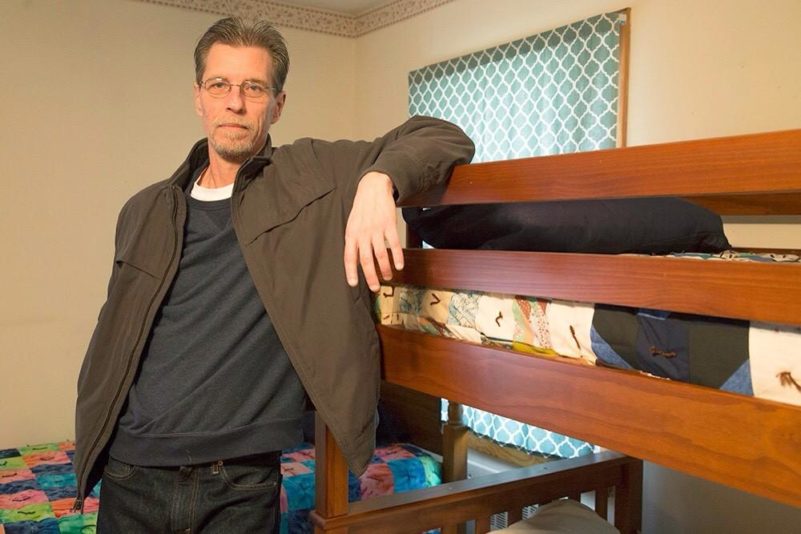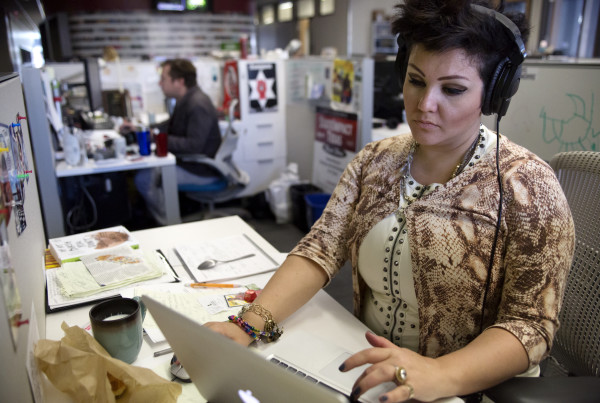From KERA:
Domestic violence victims are often women, but not only women. In Texas one in three men report report facing intimate partner violence in their lifetimes.
This month the Dallas nonprofit The Family Place opened one of the country’s first shelters exclusively for battered men and their families.
For better or worse
There wasn’t time to pack. When Jeff (his real name is being withheld to protect his identity) finally decided to leave with his two daughters, they jumped in the car and sped away.
“I went and got cash out of the ATM […] as much as I could pull, filled up the gas tank. About the second store I was in, I got a message [saying] that ‘I’m shutting off the debit card’ — because by then she figured out we weren’t coming home,” he says.
Now, the problem was where to go next. After two decades of emotional and physical abuse, Jeff, who’s in his early 40s, says he had no friends, wasn’t allowed to go to church or make decisions for himself.
“You love this person,” he says. “You’ve entered into a marriage covenant. Sickness and health, better or worse. And you are going better or for worse, right? ‘Well, I know you threw a cell phone at me. I know you threw your glasses at me, but it’s for better or worse, right? I know you said you didn’t mean to push into me or open the door in my face, or our child’s face, but it’s for better or worse, right?’ You keep playing that through your head.”
Jeff and his older daughter created a “safe word,” when it was bad enough that they needed to leave, she’d say the word. One day day, it got that bad. He started calling down the list of domestic violence shelters in North Texas. The responses were crushing.
“The thing you [hear] the most is they only serve women. ‘We’re sorry to hear you’re in the position you are, we’re here to support you but we only serve women.’”
Seeing beyond gender
Men and women perpetrate violence at roughly the same rates, yet there are far fewer resources to help men, according to Emily Douglas, an associate professor of social work at Bridgewater State University in Massachusetts. She’s one of a few academics in the country to study male domestic violence victims.
“As a society we don’t necessarily see that men are capable of being the targets of partner violence,” Douglas says.
Estimates of general partner violence in the U.S. range from about eight percent to 18 percent, and from three percent to 5.5 percent for severe violence — with approximately equal rates of male and female perpetration.
Douglas says men stay in abusive relationships for the same reasons women do.
“They love their partner, [they say] that marriage is for life, and if they leave, they’re afraid they’ll lose access to their children, which is the same kind of things we’ve been hearing women say for decades.”
In 2014, The National Domestic Violence Hotline recorded about 6,960 interactions from people identifying as male victims. In 2016, that number nearly doubled.
And yet a large-scale study of male victims who called domestic violence hotlines shows only eight percent found them “very helpful.” Sixteen percent said the people at the hotline dismissed or made fun of them.
“Providers often times aren’t really prepared to deal with anyone other than a straight woman,” Douglas says.
Resources
-For more information or help on how to get out of an abusive relationship,visit this link.
– The Family Place in Dallas offers a 24-hour crisis hotline at 214-941-1991.
– The Family Place provides an online guide to the warning signs of an abusive personality.
-The National Domestic Violence Hotline is also available 24/7 at 800-799-7233. Their website has suggestions for a personal safety plan and information about how to help a friend or family member who may be at risk.















